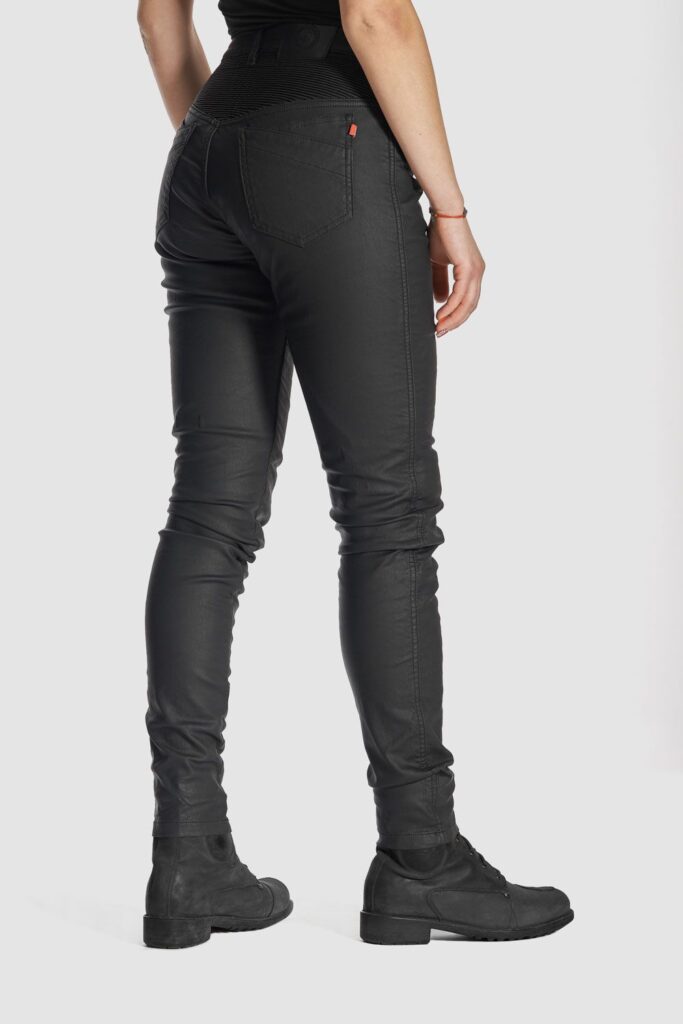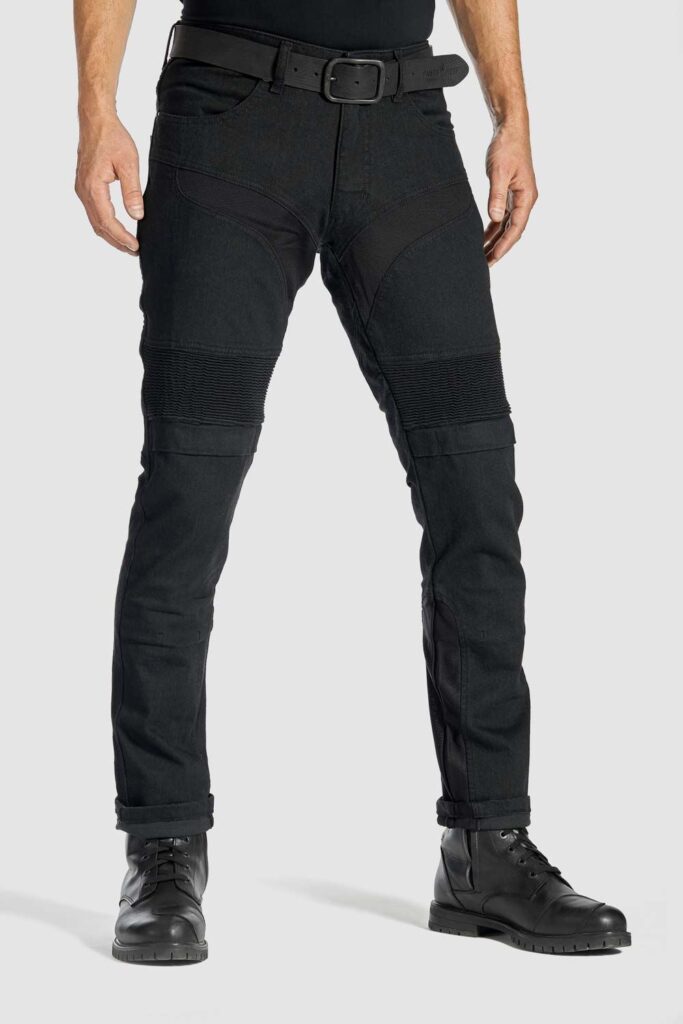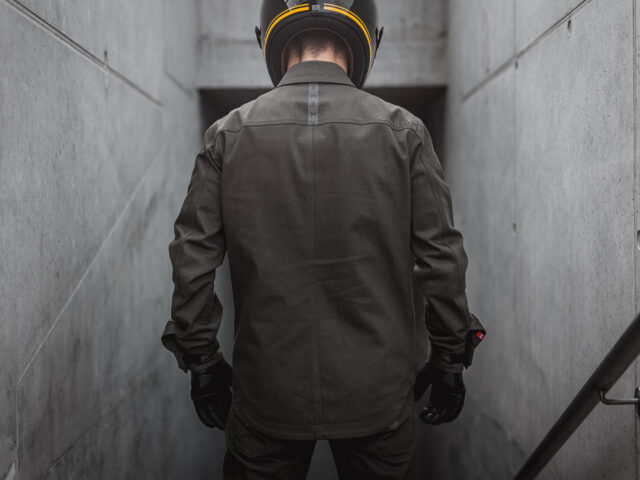The King of Motorcycle Apparel: What Is Kevlar?
July 16, 2020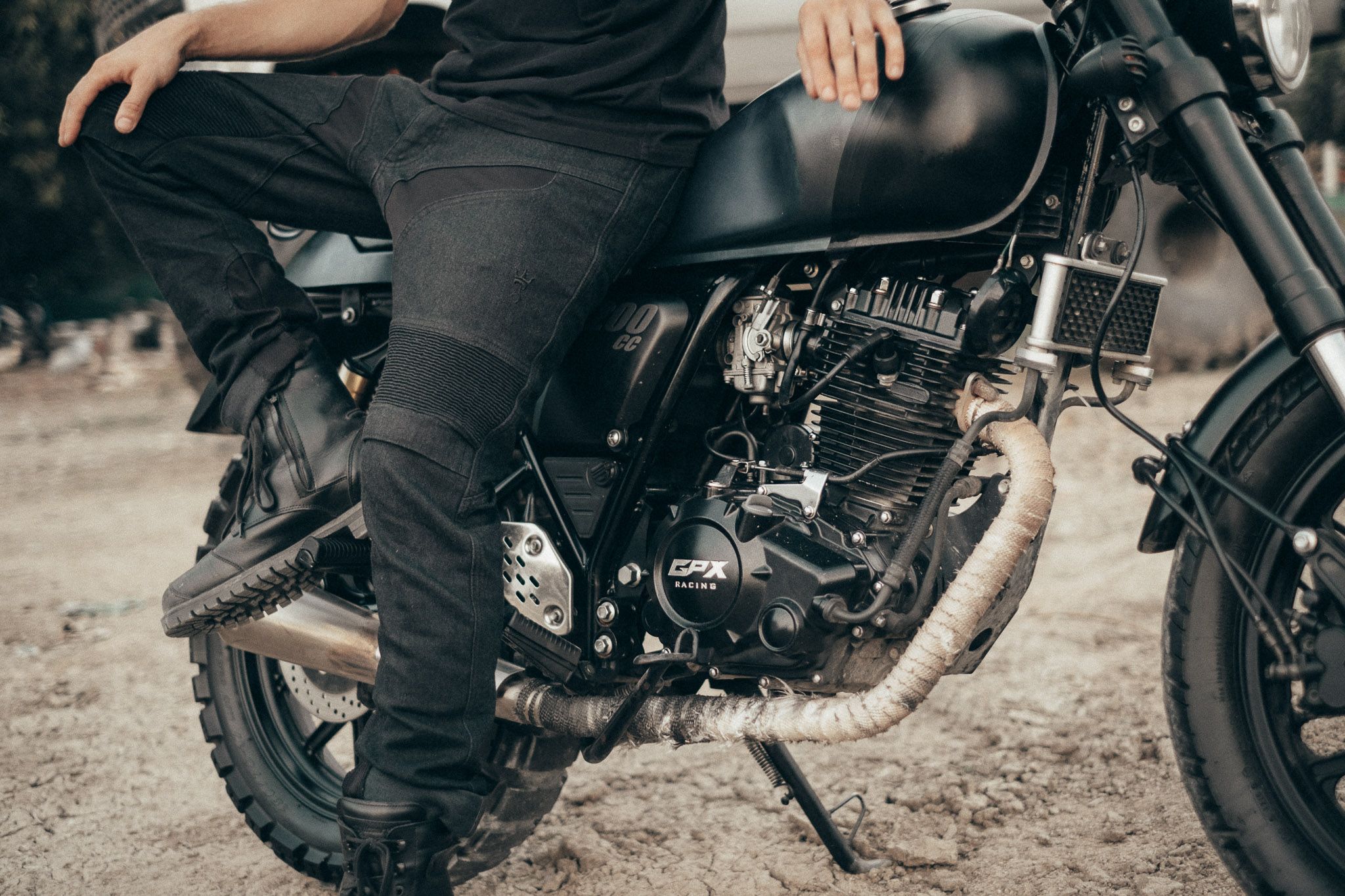
Five times stronger than steel, heat-resistant, and surprisingly light: Kevlar has been the undisputed king of protective clothing for decades. You’ve probably heard of bulletproof Kevlar vests or Kevlar motorcycle jeans. But what exactly is Kevlar, how is it made, and why do we often use it for motorcycle apparel?
Kevlar is, essentially, a high-strength synthetic fiber developed by DuPont, the chemical giant, in the early seventies. Because of its exceptional strength and durability, Kevlar material was first used in race car tires. However, as the science behind it was developed more, its use quickly spread to other areas such as protective clothing. By the late eighties and early nineties, Kevlar was used in combat helmets, military and tactical police vests, and heat-resistant firefighters’ uniforms. The motorcycle safety apparel manufacturers soon noticed Kevlar’s unique properties, and the fabric has been used by motorcycle safety gear designers ever since.
So let’s dig a little deeper and see what Kevlar is all about – and whether your next pair of motorcycle jeans should have some of the Kevlar magic in them.
What is Kevlar? Fabric Explained
Kevlar’s chemical composition is nothing short of fascinating. Scientifically speaking, Kevlar is a poly-para-phenylene-terephthalamide (don’t worry, you aren’t the only one who can’t pronounce that). In human terms, it’s basically a type of plastic, but what makes Kevlar so strong is its molecular structure. Kevlar’s molecules are positioned parallel to each other and bound so tightly it makes the resulting material, quite literally, bulletproof. The tight molecule structure is what allows Kevlar to be so torn, abrasion, and heat-resistant, yet remain light and withstand extreme temperatures.

You can rip the jeans, but not the Kevlar
Who Invented Kevlar?
Polish-American scientist Stephanie Kwolek invented Kevlar in 1964. Kwolek was working for DuPont, a chemical company, at the time of Kevlar’s invention. While researching a solution for strong, heat-resistant car tires, Kwolek and her team made a discovery: blending a unique set of plastic polymers, Kwolek realized the resulting product was amazingly strong – much stronger than nylon which was widely used at the time. So much so, in fact, that DuPont immediately threw more resources at researching and developing this new material. By the late seventies, Kevlar was already in use in the car racing industry, then spread to aircraft and boat construction, and soon, protective clothing.
Both models Lorica Kev 02 and Karldo Kev 01 have a thick mid-layer lining made of DuPont™ Kevlar®
How is Kevlar Made?
So what is Kevlar made of, exactly? We already know the unpronounceable scientific name for its components, but it means a synthesized blend of plastic polymers binding together uniquely. Kevlar is made by producing the chemical compound first, then fusing it with another patented solution. Finally, the product is heated and spun, and the resulting fibers are then cut and woven into the desired fabric, be it ropes, bulletproof vests, or motorcycle jeans. The process of producing Kevlar is an extraordinary fusion of molecular chemistry and innovative design.
Kevlar Properties
Because of its unique chemical composition and the process of synthesizing it, Kevlar is extremely high-tensile. It’s basically a fancy name for Kevlar’s signature property of being incredibly stretch- and tear-resistant.
You can see an undamaged Kevlar lining during this 38 meters drag test at 45 km/h speed.
How strong is Kevlar, really? Imagine a bullet entering a Kevlar vest: what happens is, the bullet gets caught in the Kevlar fabric, which, instead of tearing, absorbs and disperses the impact force. More often than not, bulletproof vests are made of several layers of Kevlar for extra strength, and the bullets can even get bent or distorted hitting the Kevlar. Yep, it’s that badass.
What is Special about Kevlar?
So, Kevlar is tough – as in, bullet-bending tough – but what is truly special about it is its wide range of use. Aside from being stronger than steel, Kevlar is also uniquely heat-resistant. This fabric can withstand temperatures as high as 400 C (the melting point of Kevlar is 420 Celsius), which is why firefighters use it. It’s also why it comes so handy while creating motorcycle safety clothing (think abrasion and heat resistance when sliding on the tarmac, for example). Equally, it does not become brittle in extreme cold and can withstand temperatures below 195 C: that’s why it’s used in space suits as a protective outer layer.
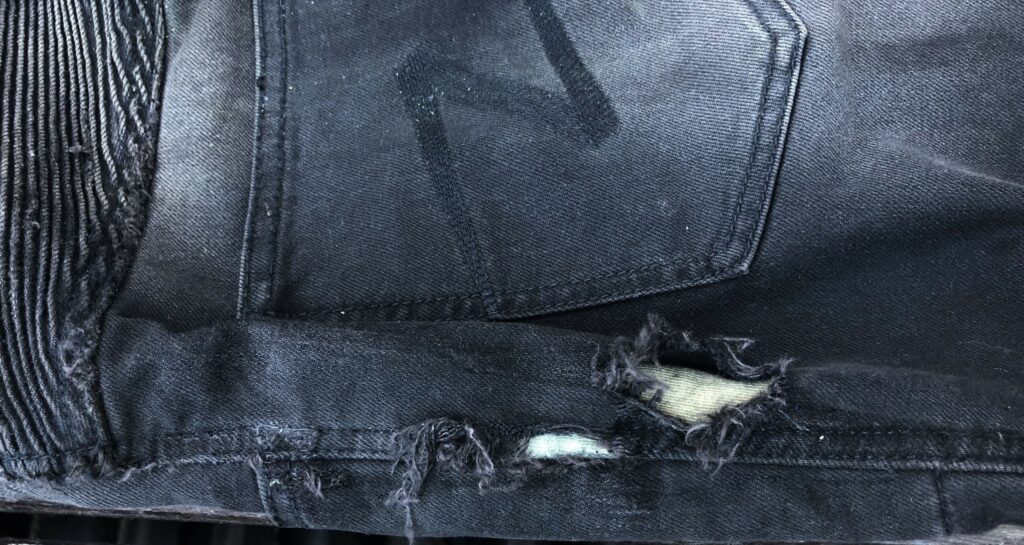
Kevlar jeans after Sebastian’s crash. You can read the full story here.
Where is Kevlar Used?
As mentioned previously, Kevlar’s uses include protective clothing, heat-resistant firefighters’ clothing, combat gear, bulletproof vests and face masks, space suits, and motorcycle safety gear. But it’s not just protective gear for humans: Kevlar is also widely used in manufacturing car and bicycle tires, aircraft, spacecraft, ropes, sails… the list is endless: whenever there’s a need for strength, heat resistance, cut and tear resistance, and durability, you’ll likely find Kevlar.
Kevlar vs Cordura
When it comes to motorcycle safety gear, however, Kevlar now has some competition. While incredibly strong and reliable in different crash scenarios, Kevlar is not breathable and is typically heavier than other protective fabrics such as Cordura or Dyneema. This is why gear manufacturers now tend to either mix and match different fabrics (for example, use Cordura for the garment and only add Kevlar in high-impact areas such as elbows, hips, and knees) or blend several fiber types together. However, Kevlar remains one of the toughest materials out there.
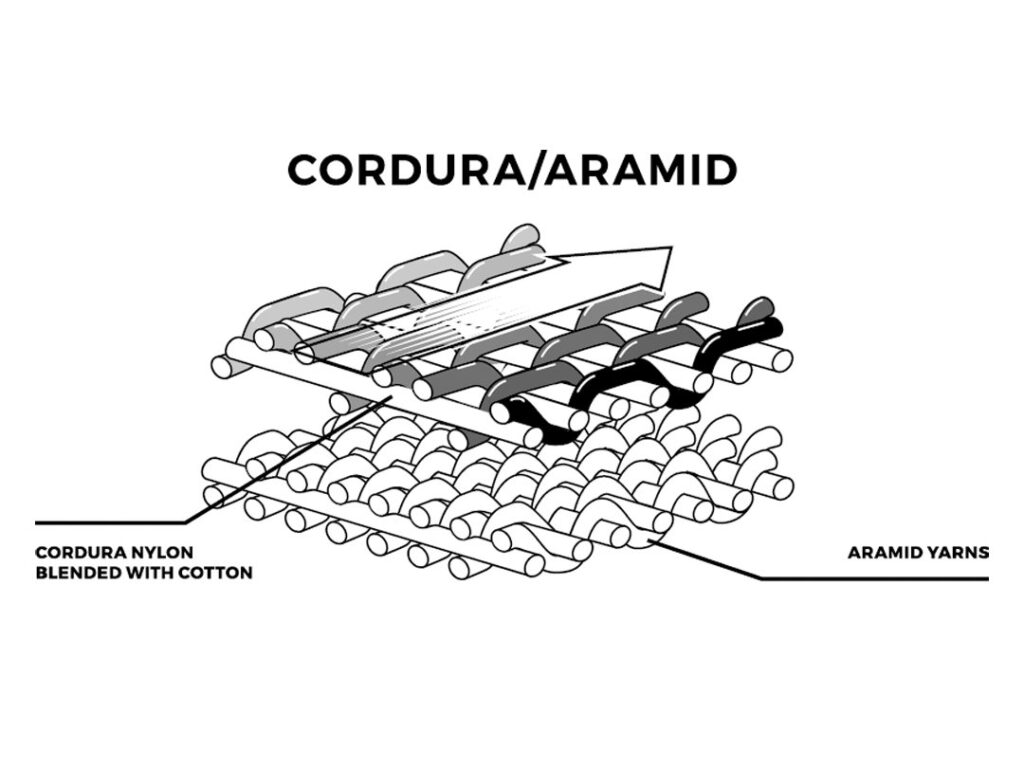
How Can Kevlar Improve Protection for Motorcycle Apparel?
Speaking of tough: while Kevlar is widely used as reinforcement for motorcycle jeans and jackets, often in the form of extra padding or extra layers, it can also reinforce other parts of the gear. One example is jeans and jacket seams. Burst resistance is something very few people ever think of, but consider this: even if your motorcycle jacket is made out of protective materials, it’s not going to be much help if it bursts at the seams when you crash. That’s where Kevlar comes in: here at Pando Moto. We love using Kevlar to reinforce the seams of our motorcycle jackets and pants to make sure the garment is virtually indestructible.
